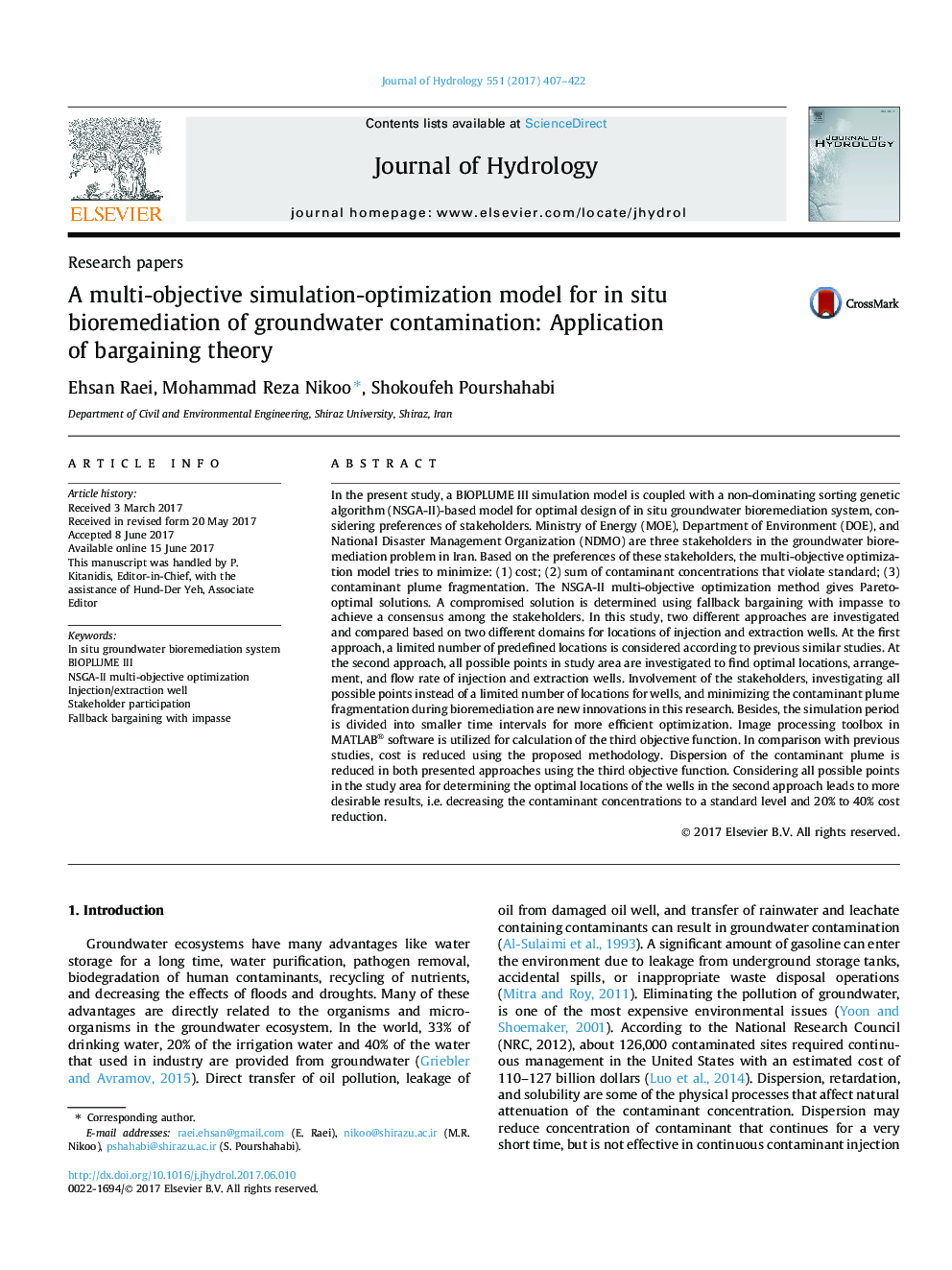| کد مقاله | کد نشریه | سال انتشار | مقاله انگلیسی | نسخه تمام متن |
|---|---|---|---|---|
| 5770911 | 1629903 | 2017 | 16 صفحه PDF | دانلود رایگان |

- Stakeholder engagement in optimization of in situ groundwater bioremediation.
- Coupling the BIOPLUME III model to the NSGA-II multi-objective optimization model.
- Optimization of the locations and flow rates of the injection and extraction wells.
- Minimizing the contaminant plume area and plume fragmentation during bioremediation.
- Using fallback bargaining with impasse to achieve a consensus among stakeholders.
In the present study, a BIOPLUME III simulation model is coupled with a non-dominating sorting genetic algorithm (NSGA-II)-based model for optimal design of in situ groundwater bioremediation system, considering preferences of stakeholders. Ministry of Energy (MOE), Department of Environment (DOE), and National Disaster Management Organization (NDMO) are three stakeholders in the groundwater bioremediation problem in Iran. Based on the preferences of these stakeholders, the multi-objective optimization model tries to minimize: (1) cost; (2) sum of contaminant concentrations that violate standard; (3) contaminant plume fragmentation. The NSGA-II multi-objective optimization method gives Pareto-optimal solutions. A compromised solution is determined using fallback bargaining with impasse to achieve a consensus among the stakeholders. In this study, two different approaches are investigated and compared based on two different domains for locations of injection and extraction wells. At the first approach, a limited number of predefined locations is considered according to previous similar studies. At the second approach, all possible points in study area are investigated to find optimal locations, arrangement, and flow rate of injection and extraction wells. Involvement of the stakeholders, investigating all possible points instead of a limited number of locations for wells, and minimizing the contaminant plume fragmentation during bioremediation are new innovations in this research. Besides, the simulation period is divided into smaller time intervals for more efficient optimization. Image processing toolbox in MATLAB® software is utilized for calculation of the third objective function. In comparison with previous studies, cost is reduced using the proposed methodology. Dispersion of the contaminant plume is reduced in both presented approaches using the third objective function. Considering all possible points in the study area for determining the optimal locations of the wells in the second approach leads to more desirable results, i.e. decreasing the contaminant concentrations to a standard level and 20% to 40% cost reduction.
Journal: Journal of Hydrology - Volume 551, August 2017, Pages 407-422